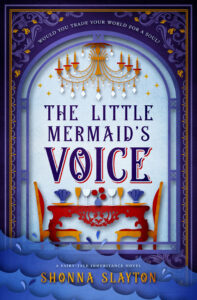This year for the Blogging from A to Z Challenge, I’m writing about the 1800s in celebration of Nellie Bly and Elizabeth Bisland’s race around the world in 1889, the subject of my new novel based on this adventure: Liz and Nellie.
***
Note: I originally published this as R is for Railroad, forgetting that I meant for it to be on T day so I could do Reform cloths on R day. So if you were here earlier and are experiencing deja vu, now you know why!
In the 1800s if you needed to travel long distances, you’d either take a ship or a train. When Elizabeth Bisland set out in her race against Nellie Bly, she left Grand Central station in New York headed for Chicago. She was in for a wild ride when she transferred to a fast mail train that was trying for its own record for the fastest mail run to California. Falling behind, the manager had a fresh engineer come aboard to make up the difference in time:
He was a gentleman of Irish extraction who labored under an entire absence of physical timidity, and who remarked with jovial determination, as he climbed into the cab, that he would “get us to Ogden – or hell, on time.” Several times during that five hours’ ride the betting stood ten to one on the latter goal, and Hades was hot favorite…..The telegraph pole reeled backwards from our course and the land fled from under us with horrible nightmare weirdness. The officers of the train became alarmed and ordered speed slackened; but Mr. Foley, consulting his watch, regretted with great firmness that he could not oblige them.
We arrived in Ogden on time.
Mr. [Foley] dismounted with alacrity from his cab, remarked that these night rides were prone to give a man cold, and went in pursuit of an antidote behind a swinging Venetian door on the corner, and we saw him no more. –Elizabeth Bisland, Elizabeth Bisland in Seven Stages
Interior of Rococo Period Car, c. 1890s.
Newberry Call Number: Pullman Company Archives, 03-01-01, box 16, folder 722.
Nellie Bly also had several interesting encounters on trains. She complained that the European models were not as comfortable as the ones in the USA (nearly froze on the train through the mountains in Italy), and found it odd that the European compartments each had their own doors which were locked from the outside:
Then too, did the English railway carriage make me understand why English girls need chaperones. It would make any American woman shudder with all her boasted self-reliance, to think of sending her daughter alone on a trip, even of a few hours’ duration, where there was every possibility that during those hours she would be locked in a compartment with a stranger.
Small wonder the American girl is fearless. She has not been used to so called private compartments in English railway carriages, but to large crowds, and every individual that helps to swell that crowd is to her a protector. When mothers teach their daughters that there is safety in numbers, and that numbers are the body-guard that shield all woman-kind, then chaperones will be a thing of the past, and women will be nobler and better. –Nellie Bly, Around the World in 72 Days







Train rides during that time had to be fascinating.
Mason
Alex’s Ninja Minion
It’s always fun when a Ninja Minion visits 🙂 Thanks for helping out with A to Z!
how amazing is that railway carriage? So plush and gorgeous compared to our utilitarian carriages of today! No wonder people enjoyed travelling by train so much back then – it would beat a horse or stage coach 🙂
I know, isn’t it fancy? Not all of them were this nice, but something cozy like this wouldn’t be so bad to travel in.
Beautiful cars…great envisioning myself back in those days.
Beth Lapin
Activities for a Good Life
BethLapinsAtoZblog.wordpress.com
Nice to imagine…nice to live in modern times, too.
Cool story. Trains are still a great way to travel though I’ve never seen modern cars looking so comfortable.
Susan Says
I’ve only ever been on short train trips. We’re considering taking a longer trip one day, but I imagine it might be like the long bus rides I took when in university. Exciting at first, but soon become weary.